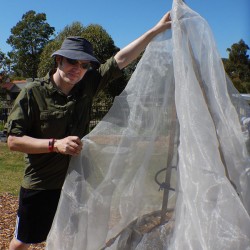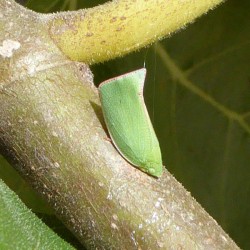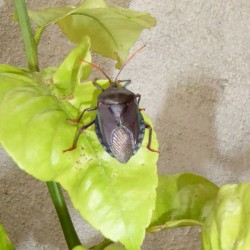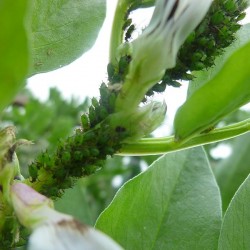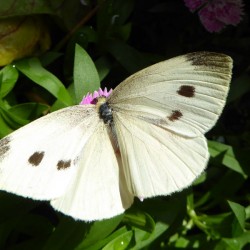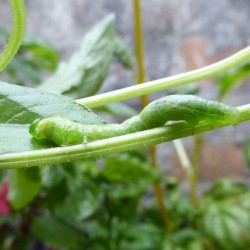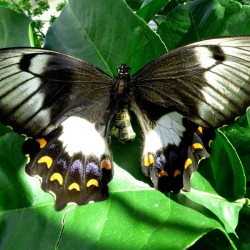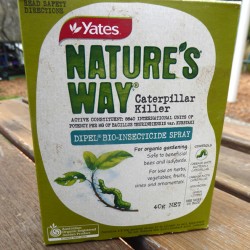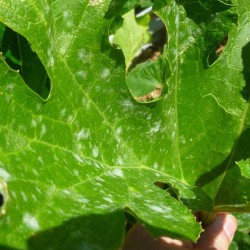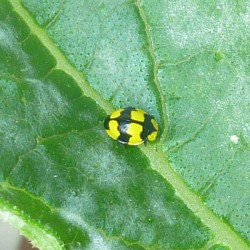Plant healthcare
Stinkhorn
Phallus rubicundus is the name of this odd looking mushroom in the family of stinkhorns. It’s up to 20 cm long fruit bodies emerge and grow within few hours on warm and moist Spring or Autumn days. Organic matter and mulch offer them great growing conditions. They topple over and decay within a day or [more]
Healthy environment
Key to successful gardening is to understand the needs and properties of the plants you want to grow the environmental factors that make them thrive or stall the properties and life-cycles of potential pests As gardeners we are constantly learning. Finding out why a particular problem occurs grows our skills. Embrace mistake, it’s a chance [more]
Basic pest-control strategy
Insect and fungal pests are a natural part of our ecosystem. We strive to reduce their damaging impact by trying to understand their needs and changing the conditions in our garden to be less inviting to them by tolerating a degree of pest damage to encourage predatory animals to life in our garden. By eating [more]
Crop rotation
In Mort Bay Community Garden we grow a wide variety of crops, which all need a plant-specific set of nutrients and are challenged by different pests. Growing a sequence of different types of crops in any one bed over subsequent seasons is called crop rotation, a strategy already practised by Middle Eastern farmers 8000 years [more]
Tomato Bud Worm
Signs of infestation Young caterpillars feed on the foliage first before moving into flower buds or developing fruits. What is happening and why? Budworms are caterpillars of the Helicoverpa moth family. The moths lay their eggs at night on young foliage close to fruits or flower buds and the young caterpillars feed on the [more]
Green plant hopper
About 15 mm small and shaped like a bright green triangle green plant hoppers are very well disguised as a leaf. Most often you will only realise they are around when they hop long distances to escape after being disturbed. A member of the bug family they are a pest sucking on the plant’s sap. [more]
Dealing with citrus stink bugs
When inspecting plants look out for tell-tale signs: the actual animals, often sucking at the most tender leaves. Black adult or orange immature bugs limp and wilting leaves leaves that show brown, burnt areas intense, repugnant citrus smell Preventive measures: Not many predators go for stink bugs because of their caustic defence tactics. Make sure [more]
Dealing with aphids
When inspecting plants look out for tell-tale signs: the actual animals, often sucking at the most tender leaves plenty of ants patrolling the plants limp and wilting leaves sugary, sticky honeydew on the leaves Preventive measures: Aphids are hard to prevent, but there are a lot of predators eating aphids. Companion plant flowers with the [more]
Cabbage butterfly
This 5 cm large butterfly is a common sight in the garden. It has white wings with black tips and dots. There are several species of cabbage butterfly that look and behave very similar. Other names of those butterflies are large white butterfly or small white or simply white butterfly depending on the species. The [more]
Aphids
Aphids are soft skinned sap-sucking insects. They are tiny animals about 2 to 8 mm long. Aphids come in a range of colours: green, black and brown, whitish and light red. Other names are black-fly and green-fly. Most aphids species specialise on particular host plants. They are a serious and if not contained devastating pest. [more]
Dealing with caterpillars
Caterpillars are the larvae of butterflies and moths. They are voracious eaters can can easily destroy a crop. The two most common caterpillars we deal with in our garden are the cabbage butterfly larvae and the larvae of the tomato bud worm. Preventive measures to avoid caterpillar problems Plant companion plants! This confuses the parent [more]
Orchard swallowtail
Who says that pests have to be ugly? The adult stage of this animal is a beautiful butterfly. Indigenous to eastern Australia and PNG these butterflies have a wingspan of up to 14 cm. They are mostly black and white with red, orange and blue patterns on their back wings. The larvae is a [more]
Budworm moth
Budworms are caterpillars of the Helicoverpa moth family. The moths lay their eggs at night on young foliage close to fruits or flower buds and the young caterpillars feed on the foliage first before moving into buds or developing fruits. Budworm moths choose several fruits for their young ones, in our garden they are a [more]
Dipel
Dipel is a product used to control caterpillars. It is approved for use in organic gardening. It is made from naturally occurring bacteria (Bacillus thuringiensis) and is safe on bees, ladybirds, birds, fish, mammals and pets. Dipel has no withholding period: vegies, fruit and salad ingredients can be washed and eaten immediately after spraying. [more]
Powdery mildew
Powdery mildew is the name of a variety of fungi, that affect the leaves of plants. They are present everywhere in the environment and are brought in by wind, birds and insects. Powdery mildew loves warm humid nights and dry, warm and shady areas of the garden. Really wet conditions and constant very high or [more]
Preventing powdery mildew
Powdery mildew is a fungal infection, distributed by fungal spores. The fungus favours warm moist conditions to set foot onto a plant and warm dry conditions to thrive. We can’t control the presence of fungal spores and we can’t control the weather conditions but there are some basic rules that help reducing the risk: always [more]
Dealing with powdery mildew
Once a leaf is seriously infected it needs to be removed. It can go into the compost because the spores are around in the environment anyway. We can’t remove the spores, but we can make the conditions less favourable for the fungi. We use different approaches and are still testing which works best for us. [more]
Fungus eating ladybird
The fungus eating ladybird does as it’s name says: it feeds on fungi. It’s not actually looking for mushrooms – mould and mildew are what the little beetle is after. This native Australian ladybird is about 5 mm long and shows bright yellow dots that look square-ish and somehow frayed. Its larvae is about 10 [more]



